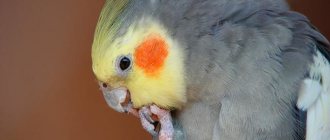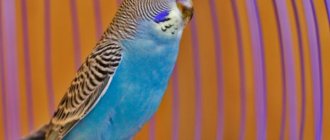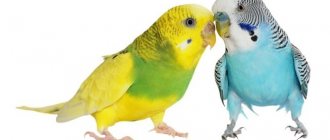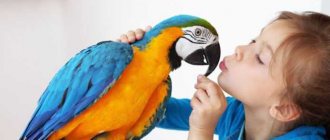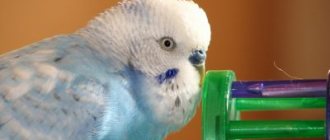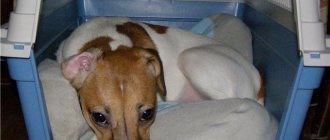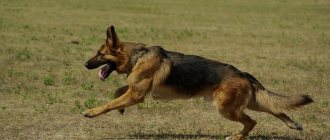09 November39074decorative birdscorellacockatooparrot
The cockatiel is a talking parrot from the cockatoo family, also called a nymph. This charming bird is native to Australia. The Corella parrot will be an excellent pet that will delight you not only with its exotic appearance, but also with its singing abilities. In this article you will learn how to tame a cockatiel and teach it to speak, and also find useful information about keeping a cockatiel.
Features of keeping cockatiels
Cockatiels are one of the noisiest creatures in the bird world.
Before you get a new pet, you should decide whether it is suitable for you and your family. Still, the character traits of this species will be a plus for some, but will irritate others.
Be sure to take this into account before purchasing a cockatiel so as not to create additional stress for yourself or the bird.
- 1. Cockatiels are noisy and active. If you don’t yet know whether the cockatiel parrot talks or not, then rest assured that with proper training, it will talk, and how. No, they won't broadcast incessantly, but get ready for morning singing and evening lullabies. Not all people tolerate sharp sounds well at this time of day.
- 2. They love family attention and do not tolerate prolonged loneliness. If you have a very busy schedule and are away from home most of the time, then this pet is not for you. Some birds require less attention, but their level of socialization will drop significantly.
- 3. There will be quite a lot of debris from the nymph. The bird has its own home, and it will definitely establish its own order there, and throw everything unnecessary outside the cage. Of course, feathers will fall out and fly in all directions. During free walks, the cockatiel may well find something and chew something.
- 4. Buying a bird is not the last financial investment. She will also need a cage with all the accessories, regular purchase of food, special toys and broken items in the cage, periodic examinations by a veterinarian and even treatment. The Corella will be a full member of the family and will require the necessary care in all aspects.
- 5. You also need to know how long a cockatiel lives at home. With a good standard of living, this pet will live for more than 20 years and will need care for all these years! Understand that this is not a toy for a few years, the parrot will be with you for a really long time. Corella may well witness how you finish your studies, find your soul mate and your children together graduate from school.
If none of this scares you away, then soon you will have a wonderful, very cheerful and incredibly loyal pet. He will happily greet you, wake you up in the morning and sit on your finger. All that remains is to prepare his future home.
Corella sings "My Neighbor Totoro"
Characteristics and features of Corella parrots
Behavior and temperament
The cockatiel is attracted by her personality, not her looks. They love their owners, love attention and play. Their vocal nature can be channeled into speech learning, which is always a bonus with a potentially noisy bird. It is important to set reasonable limits and teach your pet from the beginning how to enjoy toys and independent play. The cockatiel can sing very well. However, moving to a new home can be stressful for the parrot, which plays a significant role in singing. Therefore, the singing of a cockatiel parrot at home can only be heard if the bird is well and is surrounded by love and care.
The appearance of offspring
It is very easy to get offspring from parrots at home. The birds should be a couple of years old. A nest (house) must be attached to the cage, and the bottom must be covered with wood shavings. You can use lying houses or trays. At the bottom of the house you need to make a depression and add sawdust. A female Corella lays 5-8 eggs, which are incubated by both parrots for 3 weeks, with the male Corella incubating the clutch during the day, and the female sitting on the eggs at night. The chicks spend about a month in the nest.
After six months, you can find out the gender of the cockatiel. The chicks grow feathers and you can distinguish parrots by color, the male with brighter plumage from the female.
Flaws
Incessant screaming, feather pulling (birds need lots of toys and branches to chew on to stave off boredom) and aggressive biting, especially from a male at puberty. Most cockatiels are capable of extremely loud screams or early morning "awakenings."
What types of cockatiels are there?
The natural color of these parrots is represented by a gray body, yellow head and bright orange cheeks. During artificial breeding, new, brighter colors were developed. Now you can find cockatiels with the following colors from breeders:
- White. There are two types: albino and just white. Differences in eye color. Albinos will have red eyes, while whites will have black eyes. Let's allow a light cream shade of plumage. The head and crest remain yellow.
- Whitewing. This color is characterized by white flight feathers, and the main feathers remain gray.
- Light grey. Somewhat lighter than usual gray individuals. The yellow head and crest are preserved.
- Pearl grey. In this color the feather has uneven pigmentation. The very edge is a rich gray color, and the middle of the feather is white. You can find individuals that have a cinnamon or yellow tint instead of white. Only females retain this unusual coloration for their entire lives. Males change color after molting.
- Cinnamon. The main plumage can take on various shades of brown.
- Dark yellow. In this case, the color varies from light cream to dark yellow.
- Lyutino. This color implies a yellow body color with white spots on the wings. The cheeks are bright orange.
- Blackwing. Representatives of this color have a back and tail that are much darker than the main gray color of the body. The wings are also darker and have white spots.
- Black. The entire cockatiel is a rich dark gray color. The breast is almost black in color; there are light spots on the wings. The cheeks are dark orange and may have a few black feathers.
The most common colors: gray and lutino - Sheki or spotted. The main shade of these representatives is gray. There are many white spots on the wings. The head is white, the tail should be white-yellow. Spotted cockatiels have a subspecies - the harlequin. In such birds, only the wings remain gray, the head and crest are yellow, and the main part of the feathers is white.
By crossing different colors of cockatiels, unusual and original colors are increasingly being obtained. But most of them are still gray. This coloring is considered natural. The brightest colors are obtained by crossing spotted representatives with other pigment carriers.
Description of the Corella parrot
Corellas have become popular relatively recently in our country, but are already characterized by connoisseurs of exotic birds as very original, intelligent and fairly easy-to-keep pets.
Parrot intelligence
Thanks to their well-developed intelligence, cockatiels are deservedly included in the top ten most intelligent birds that are excellent for keeping at home. According to numerous studies, the intelligence of an adult bird is quite consistent with the mental abilities of a five-year-old child .
Appearance and colors
The length of an adult bird, including its tail, can vary between 30-33cm. Characteristic of the species is the presence of a rather high crest on the head and a long tail with a pronounced point. The plumage of females and males differs. Males, as a rule, have brighter, inviting plumage of a dark olive-gray color, with a yellow crest and head. The feathers on the wings are most often velvety black, with a pronounced bluish or silver tint.
This is interesting! The beak of a cockatiel is very similar in appearance and shape to the beak of a cockatoo, but smaller, however, with its help the feathered pet is able to easily bite through medium wires and even electrical wiring.
Females are characterized by dirty gray main plumage and the presence of a brownish tint on the underside of the body, and there are pale brown spots on the cheeks. The head area and crest are pale gray with a light yellow tint. It should be noted that the color of the plumage in young birds is similar to the color of females, so only at one year can one easily determine the sex.
Subspecies of Corella parrot
The ease of breeding such birds in captivity has made it possible to obtain many new plumage colors, which significantly complicates the independent determination of the sex of the bird. The most famous subspecies include:
- Albino Corella is a white or cream-colored bird with red eyes, which is due to the complete absence of pigment. The head area and crest are yellow. The female may have pale yellow spots on her wings;
- A white cockatiel with black eyes, obtained by crossing a white female with a gray male. Males of the subspecies are characterized by the presence of lighter feathers in the undertail, and females are distinguished in this part by a distinct marbled pattern;
- Lutino Corella is a yellow bird with red eyes. A distinctive feature of the subspecies, regardless of gender, is the presence of bright orange spots on the sides of the head;
- light gray cockatiel, obtained in the process of crossing gray and white birds with black eyes. A distinctive feature is the presence of lighter shades of gray in the plumage;
- dark yellowish cockatiel - birds with different variations in plumage color ranging from dark yellowish to light cream shades.
Lately, cockatiels with patchy white spots on their plumage have attracted particular attention . It is generally accepted that shekis are the best source material for breeding new and very original subspecies.
This is interesting! Shakes can be represented by harlequins, birds with pearl-gray plumage, white-winged and black-winged specimens, as well as black-gray birds with a very intense black breast color.
Range and habitats in the wild
In the wild, the corella inhabits forest areas located in the coastal zone of rivers, as well as open eucalyptus groves and savannas overgrown with low bushes. A large number of birds of this species can be found on the top of a dried tree or tall bush. The maximum number is in Australia.
Return to content
What should be in a cockatiel's cage for feeding and caring for them?
Caring for a cockatiel at home largely depends on its cage. It must be of sufficient size. Choose a cage that is at least 60 centimeters high and 50 centimeters wide. It is advisable that the rods be positioned horizontally or have several horizontal rods - the bird loves to climb, but it will not be comfortable for it on vertical ones. The size of the gap between the rods is recommended to be 1.9 centimeters, and the rod itself should be steel. Lead and zinc rods spoil the health of all birds due to the poisons they release.
The conditions for keeping cockatiels additionally require special equipment. Must be present:
- Drinker and 2 feeders. One of them will be for dry grain mixtures, and the second for fresh food and wet food;
- Several perches;
- Rocker;
- Nest or house;
- Special toys. These can be ropes, rope, plastic or wooden ladders, special balls and a mirror.
Additionally, you can install a special screen on the cage so that the food does not spill out of the cage when the nymph eats. It is useful to have special cleaning products in your arsenal. With them, cleaning the cage will be much easier, and in addition, such products are also good disinfectants.
Choosing a pet
To keep your pet healthy and happy, keep his house clean.
When we have a ready-made home for the cockatiel, we can choose a bird for ourselves. Where to choose it is your personal preference. It is more reliable to contact breeders who breed this particular breed of birds. From them you can learn all the nuances of keeping them at home, clarify what the bird does not like, create a balanced diet and look at the parents. Moreover, you will not need to be tormented by questions about how to determine the gender of your nymph. The breeder will definitely answer this question, because he knows from his own experience how to care for a cockatiel at home.
Obvious sexual characteristics in cockatiels appear from 3.5 months, but one can definitely say only after a year. How to distinguish a male cockatiel from a female from a photo is quite possible. The male is usually brighter in color than the female. There are also differences in the crest. The female has a wider and shorter crest, but the boy will have longer feathers, and the crest itself will be narrower. There are also differences in behavior. Males are more active, more sociable and love to sing. Girls are not so talkative. When boys sit, they rise high on their paws, while girls' bellies are almost at the same level as their paws.
The best age for cockatiels to move to a new family is 3-3.5 months. The chicks are old enough to be separated from their parents and young enough to undergo socialization with a new family. You can find out your approximate age yourself. The peculiarity of each growth period is reflected in the color of the plumage, the color of the eyes, paws, folds on the paws and the smoothness of the beak.
Young cockatiels are somewhat brighter and lighter in color, while adults are richer and darker. The crest of juveniles is not as thick as that of mature individuals. The eyes of young animals are almost black, and with age the iris becomes lighter. The beak and feet of young birds are pinkish-gray, and the older the nymph gets, the less pink and more gray appears on the beak and feet . The smoothness of the beak also indicates age. In very young birds it is smooth, but years of life make it rough.
Special attention should be paid to:
- Plumage quality. It is not worth purchasing a chick during the molting period, because the body is already under stress, and moving can seriously harm your health. Their first moult occurs between six months and 8 months. The feather should lie one to one, without bald spots or stickiness.
- Eyes. They should be round, in no case squinted. There should be no discharge or peeling on them. Pay attention to the shine in the eyes.
- Beak condition. It should not be deformed or injured, and not have any growths. The nostrils should be dry and free of any discharge.
- Paws. Nymphs have 4 toes on their paws. 2 “look” forward and 2 look back. The claws should be smooth and neat.
- Cloaca. It should be clean, just like the tail. Residues of feces on the cloaca and tail are a clear signal that the cockatiel is unhealthy.
Monitor the health of the bird.
In any case, the choice of a pet should be independent, because you are choosing a friend for a very long period of time. It is better to transport a parrot in a special bird carrier. When the nymph is at home, carefully transplant it into the main cage and do not touch it at all for a while.
Differences in behavior between females and males
Until the age of three months, feathered babies do not have a pronounced temperament. At such a young age, the representatives are similar. Corella boy, after this period, tries himself as a singer. But vocal variations only last a few weeks. And until six months the male does not try to improve in this area anymore. Therefore, if a pet begins to actively sing after the first trimester of life, then we have a boy. The girl Corella is not distinguished by her exquisite singing; creaks and whistles can be heard in her tunes.
We recommend reading: Names for male and female Corella parrots
But there are also exceptions to the rules. Experts say that in practice they have encountered females who trill, in no way inferior to male tenors. Therefore, it is not possible to establish gender before the first molt.
Subsequently, the character of individuals of the opposite sex changes. Boys try in every possible way to attract the attention of the fair sex. What can you see in the arsenal of males! Here the desire to feed, offers to share a toy, clicking of the beak and tilting of the head are interspersed with peculiar dances. The behavior of the female cockatiel is characterized by passivity, sedateness and imperturbable calm. Males, on the contrary, are active and enterprising, create a lot of noise and fuss - they knock on surfaces and objects with their beaks, while folding their wings in the shape of a heart and moving them to the sides. Genuine interest is aroused not only by female representatives, but also by new entertainment in the form of toys, unusual sounds and faces.
This is interesting! Indicative cases are when a mirror is placed in front of male individuals. They can watch their reflection for a long time, while performing unimaginable pirouettes and trying to communicate with it. Girls will be interested in such an object for a short time.
Adaptation to a new place
The place must be fully prepared at the time of move-in. You should not pull your cockatiel out of its carrier with your hands into its new home. Create a hallway by simply opening the carrier door and cage and placing them opposite each other. The bird must move from one place to another on its own.
It will take time to get used to your new home. This will take at least a day, and may take a week. The owner should under no circumstances disturb the parrot at this time. A new environment already frightens the animal, and excessive attention will only aggravate the cockatiel’s stressful state. After adapting to the place, you can establish contact with your pet.
Taming the cockatiel
Usually taming does not require anything special or complex skills. If the bird was purchased from a breeder, then it is socialized from the beginning. Individuals from pet stores may be a little less attuned to humans, but this can also be resolved within a few weeks.
At first, just stay next to the nymph's cage for 20-30 minutes a day and talk to her . Increase your communication time every day. If there is no negative reaction and the bird approaches you, give it a treat through the cage. After a few days, open the cage and stick a tasty treat nearby so that the nymph becomes interested and comes up to take it. Then place the treat on your open palm so that the bird climbs onto your hand. When the cockatiel climbs onto your hand without fear, turn your hand so that it is comfortable for her to sit on your finger and pull the parrot out of the cage. This is how you can start taming your parrot.
Now you can pet and “sniff” your pet. You don’t have to worry about what cockatiels love. They love affection, attention and treats very much. The Corella parrot is not particularly demanding in terms of care, maintenance and feeding. But he is very demanding in communicating with his new family. She will need at least an hour of your attention every day in order not to lose the level of socialization.
You can teach a cockatiel to sing beautiful melodies
These birds are very good at learning various tricks and human speech. Males do most of the talking, whistling and singing. Girls are more modest and silent, but a lot depends on how often you talk to her. Any animal is set up for dialogue, and the more you talk to it, the more it will want to answer you.
The basis of proper training is praise and affection. Never swear at a bird. This will only scare her, but she will not understand what exactly upset you. Repeat the desired words or tricks systematically for 20-30 minutes a day. Immediately positively encourage any fulfilled desire - praise with words, stroke, give a treat.
When practicing commands, always accompany the action with one specific word. Let’s say, when learning to sit on a finger, say “sit,” move your finger under the paws (this is how the cockatiel will reflexively move its paws to the finger) and immediately give it a treat.
Plumage color
This method is suitable once the birds reach the age of one year, when the bird has changed its feathers. But how can you determine the sex of a cockatiel by color if, as a result of selection, the sexual characteristics in the plumage are mixed? Here the hope remains for behavioral manners and a DNA test. However, it is also worth trying to understand the mutational nuances.
Natural gray
In the wild, this species has a modest grayish body and characteristic round spots on the cheeks. The yellowish head and crest of males contrasts with the leaden tone of females and paler speckles on the cheekbones. The boy Corella parrot acquires a black tail and loses the painted ovals on the inside of the wings. Girls here retain decoration in the form of narrow, transverse stripes of rich color and small inclusions on the wings. The question of how to distinguish the sex of a cockatiel of a natural shade is not so pressing. Here the typical features of the species are preserved unchanged.
Lyutino
At first glance, it is very difficult to figure out how to distinguish a female from a male cockatiel of this subspecies. Representatives of different sexes up to twelve months of age have the same white body and lemon-colored head. You can determine the sex of a cockatiel parrot in the second year of life by carefully examining the tail and wings of the feathered lutino. Boys remain completely white, girls retain the same coloring, but with yellow splashes on the tail and wings.
Pearl barley
The birds received this name in honor of the ash-colored pearl pattern on the body. For male pearl cockatiels, gender determination after the first molt is not difficult. At puberty, the color of male representatives becomes monochromatic and, like in the natural habitat of wild counterparts, the tail is painted black. In the female half, after one and a half years, it acquires a permanent yellow tint. The difference between a boy and a girl cockatiel is that females retain the pearlescent pattern throughout their lives.
White
Parrots of this color were born as a result of the hybridization of white females with gray males. Collectively, representatives appeared with snow-white feathers with a yellowish tint and a speckled pattern on the inside of the tail. After observing white cockatiels for some time, you are confused about how to distinguish a male from a female. Birds of different sexes have completely black eyes and light plumage. You can find out the sex of a cockatiel parrot by looking at its tail. In males, the undertail is slightly lighter than the body, and its long feathers are painted in snow-white tints. The weaker sex can boast of lemon-colored feathers.
Albino
A similar picture is observed in this group of parrots. How to determine the sex of a cockatiel if both male and female representatives are white in color? It is very difficult to establish the truth when natural colors are completely absent in the plumage or are found in small quantities. Girls have an albino torso with a slight yellowish tint, while boys have a snow-white body. A male or female Corella is born with red eyes, which after some time acquire a rich cherry hue. Feminine birds are decorated with amber-colored spots on the tail and wings.
White-faced (cheekless)
According to researchers, this is one of the most unusual variations in genetic progress. This type of parrot is completely devoid of any variations of yellow feathers. Another characteristic feature of white-faced individuals is the complete absence of spots on the cheeks. Males strictly follow the intended course and have an absolutely even, white plumage color, without any inclusions. The female cockatiel, remaining a true representative of the female race, allowed herself an innocent decoration in the form of a tuft of gray or brown tones.
Some varieties of parrots are endowed with such colors that at first glance it is very difficult to determine the gender. For example, black-winged, black cockatiels and shecks. In this case, gender can only be determined by observing the behavior of pets or using DNA tests.
Nutrition
Grains must be present in the parrot’s diet.
It is a balanced diet that will be the main guarantee of the excellent health of the nymphs and their life expectancy. The ideal option would be a ready-made grain mixture for cockatiels and similar parrots. Don't be alarmed that they contain a lot of grass, grains or other granules. They should be the basis (at least 65%) of nutrition.
If the main food consists of whole grains, this can cause complications on the liver. All grain feed contains too much fat, which can undermine the health of the bird. Additionally, the diet should contain fresh fruit or vegetables, cooked beans, sprouted grains - these are natural sources of trace elements, water and minerals. Be sure to install a special chalk in the cage, it will be a source of calcium. It is especially necessary for females.
There is a list of prohibited foods for cockatiels:
- Almost all heat-processed foods.
- Any sweet, spicy or fatty food.
- Mushrooms.
- Raw legumes.
- Onion.
- Avocado.
- Mango.
- Persimmon.
- Papaya.
- Bird cherry.
- Foliage from tomatoes.
- Chocolate.
- Alcohol-containing products.
- Caffeine-containing products.
Change the water daily, as this is what most often provokes diseases in cockatiels. It often contains leftover food or droppings, which are sources of proliferation of viral and fungal cultures. Remove all raw food after 3-4 hours and throw it away, even if the bird has not eaten. Such products spoil very quickly and become moldy. You should not give more than one slice of any fruit or vegetable.
Cockatiels eat heat-treated vegetables. The daily portion for one bird of all types of food is
40 grams. The only thing not included is greens, which can be enjoyed in any quantity. These are the greens that are familiar to us, such as parsley, celery, dill, lettuce and spinach, as well as sprouted grains, dandelion foliage, tree buds, clover, and nettles. Wood sticks are necessary and loved by cockatiels. These can be fruit trees, birch, pine, linden, spruce.
Introduce each new product gradually. You should not overwhelm your bird with unfamiliar foods. Firstly, this can give a negative reaction from the gastrointestinal tract (loose stools), and secondly, the pet may completely refuse unfamiliar food.
Features of caring for a cockatiel
Corellas are not very demanding when it comes to keeping them. It is important that they do not have dirt, have enough light and always have entertainment. Clean the cage regularly, and if you use bedding, choose only natural fillers. Sawdust is best.
Illumination and daylight hours are important. Don't place the cage in a dark corner, but don't place it close to a window either. Direct sunlight is undesirable. Daylight hours are 10-12 hours. It can be corrected by partially covering the cage in the summer, and by providing additional lighting with lamps in the winter. Too long a day can make the bird more aggressive, and too short a day can make it more apathetic.
Nymphs are contraindicated in drafts and sudden temperature changes. The temperature should always be between 20-25 °C. Birds need bathing in water at a temperature of 30-35 °C. These can be baths, or just a game when water flows from the tap. Cockatiels love baths.
There are no particular differences between the care of boys and girls. Differences may be present in nutrition, since even single females often lay eggs, they need additional calcium. Females also need a house or an imitation nest for comfort, but these objects will provoke the laying of empty eggs.
Health
In general, this breed is not prone to diseases and is long-lived. Any diseases that occur in cockatiels are the result of neglect of the pet. Be attentive to the behavior of the bird, because it will not be able to tell you that it is not feeling well.
What health problems may exist:
- Feather loss.
- Feather and skin parasites.
- Violation of the structure of bones and beak.
- Infectious diseases.
- Disturbances in the gastrointestinal tract.
- Obesity.
- Amyotrophy.
- Avitaminosis.
Sound the alarm immediately and run to the clinic if the bird is already clearly sick. Most diseases are caused by poor or inappropriate nutrition and stress. Signs of health problems can be seen in behavior. The cockatiel becomes more aggressive, more active, or, on the contrary, very lethargic and constantly sleepy.
The pet may refuse any food or liquid. Check for breathing problems and any discharge from the nose, eyes or cloaca. Never treat a cockatiel yourself! Entrust examination and treatment only to a specialist!
HABITAT AND LIFE IN NATURE OF CORELLA
Cockatiels are quite numerous in the wild and live throughout almost all of Australia, preferring semi-arid regions. They can also be found in open areas, in acacia thickets, along river banks, in savannas, along roads, in agricultural landscapes, in gardens and parks. Birds that live in the north roam constantly in search of food, and those that live in the south are seasonal nomads. The basis of the diet is acacia seeds and wild cereal grasses. They can also feed on buds, flowers and nectar of eucalyptus trees, and sometimes include small invertebrates in their diet. They usually drink by landing on the water, taking a sip, and immediately taking off.
Cockatiel breeding
At home, breeding of Corella parrots takes place without any problems or difficulties. It is not recommended to have chicks for individuals under one and a half years old, although females are capable of laying eggs as early as 8 months. At such a young age, the girl will only undermine her health with stress, and will not be able to fully hatch the chicks.
cockatiel egg
Attempts to have offspring will not always be successful. The egg may be unfertilized or stop developing at some stage. This happens and you should panic. Often not all eggs are fertilized, but they do not need to be removed from the nest - they help maintain the necessary warmth.
During the mating season itself and after laying eggs, it is very important to strengthen the diet with calcium and “fresh” vitamins. The expectant mother begins to have a serious calcium deficiency and needs to replenish it. The cockatiels will hatch and care for the chicks together. The chicks hatch in 2.5-3 weeks.
When the babies appear, there should be a lot of wet food in the feeder so that the parents are able to feed the young . The chicks are developing rapidly and in a little more than a month they will already be completely independent. However, you can say goodbye to them only at the age of 3.5 months.
Video: what you need to know before getting a cockatiel
DNA test
For research, you need to take 5 or 6 feathers from the animal’s abdomen, pack them in a sealed bag and rely on the competence of specialists. In some cases, bird blood is used. Fences are produced in special laboratories. Results can be obtained by phone or mail. In officially issued documents you will find the answer to the question of interest, who is in front of you a boy or a girl.
We recommend reading: What to feed your cockatiel parrot at home
Another thing is how to determine the sex of a cockatiel parrot if your city does not have such an institution. But as they say, the world is not without good people, and relatives or friends who will soon go to the capital will help solve the problem. The material is good for two days. However, we must remember that determining the sex of a cockatiel depends not only on the test result, but on the totality of all the above data.
Leave your comments and share them on social networks.
